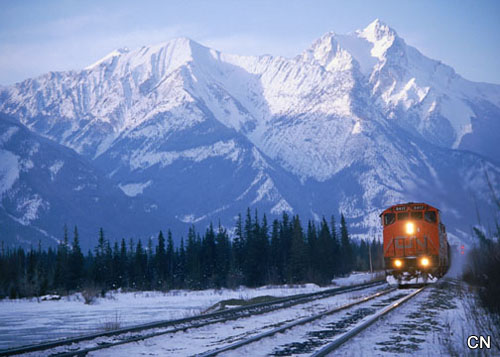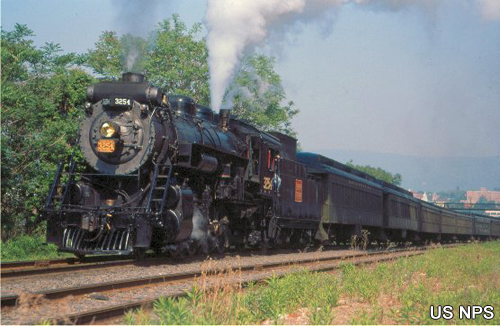

 STUART JORDAN looks at the development of Canadian Pacific's rival company.
STUART JORDAN looks at the development of Canadian Pacific's rival company.
In the previous article, I looked at the problems faced by Canadian Pacific as they attempted to build the first Canadian transcontinental railway. Thirty-four years after the last spike of the CPR was driven into the ground, another large Canadian railway company was formed.

In 1919 several failing and bankrupt railway lines had fallen into government hands. These lines were amalgamated into a single nationalised company. The new company, Canadian National Railways, was made up of the Canadian Northern Railway, Intercolonial Railway of Canada, and the Prince Edward Island Railway. They were joined in 1920 by the Grand Trunk Railway. Throughout the 1920s CNR absorbed several other smaller lines – countries around the world were doing the same, nationalising long-distance lines for security in the unstable 1920s and 1930s.
In 1923 CNR hit upon a unique idea; a national radio service that would be broadcast in the company's hotels and in special listening cars on trains. CNR Radio was set up, utilising the CNR's countrywide network of telegraph cables. With their own radio stations, as well as buying airtime on local stations, CNR Radio became the first truly national radio broadcaster in North America, as it wasn't just available on the trains, locals within distance of the broadcast towers could pick up the station. Canadian Pacific were not happy however. They resented the fact that their tax money was being used to fund a commercial venture of a rival. CNR Radio sold advertising time, and of course advertised the CNR itself. CPR attempted their own rival station, but it did not survive the Great Depression. By 1933 pressure from Canadian Pacific and some parts of the Government saw CNR Radio become the separate Canadian Radio Broadcasting Commission, which by 1936 had become the Canadian Broadcasting Corporation, which still provides TV and Radio.
In 1960 Canadian National Railways became Canadian National Railway, and adopted the still current CN worm logo. CN was recapitalised by the Government in 1978 in an attempt to stop the large subsidies the Government was paying to cover their financial losses. Running as a for-profit organisation, the company became able to pay back dividends to the Government. This was mainly helped by the shedding of several subsidiaries, and focussing on the core business of freight transportation. Air Canada and CN Marine became separate companies, and the passenger services of both Canadian Pacific and Canadian National were taken on by a separate company, VIA Rail.

Canadian National 3254 pulling an excursion train in Pennsylvania.
In the early 1990s the bloated management structure was cut-back ahead of the planned privatisation of CN. Many jobs in the general workforce were also cut, and on 13th July 1995 government legislation was finalised to privatise CN, with the stipulation that no one shareholder could own more than 15% of shares, and that the company headquarters had to remain in Montreal so that it could always be a Canadian company. The current largest shareholder is Bill Gates, founder of Microsoft, and motions going through the Canadian Parliament currently could see the limits for shareholders increased to 25% in the future.

The current route map for Canadian National, covering Canada and the US.
The newly privatised company embarked on a period of rationalisation, followed by expansion, mostly into the United States. Many branch-lines were sold off or closed down, leading to a core route from Halifax to Chicago, and Toronto to Vancouver and Prince Rupert. In 1998 CN bought the Illinois Central Railroad, which linked Chicago with New Orleans, giving them a transportation route to Mexico.
In 1999 CN attempted to merge with a large US railroad company, BNSF. Complaints were raised from Canadian Pacific and Union Pacific, and the merger was called off as a result of this, and political pressure on the companies. However in 2001 CN bought the Wisconsin Central Railroad, which allowed their lines to encircle Lake Michigan and Lake Superior. With this merger CN became owner of the British EWS freight company, until it was sold on to Deutsche Bahn in 2007, becoming first DB Schenker and then DB Cargo.
Canadian National is now one of the largest rail freight companies in North America, with lines spanning east-west and north-south across the continent.
We have many manufacturers that produce Canadian Outline stock in locomotives, coaches, and wagons.